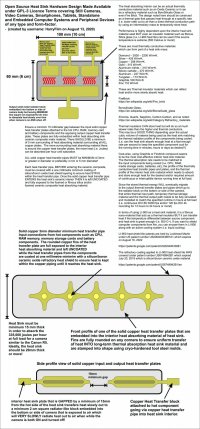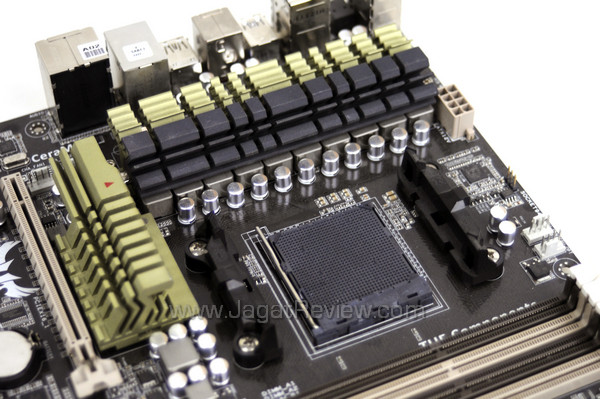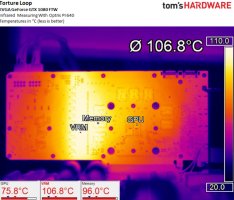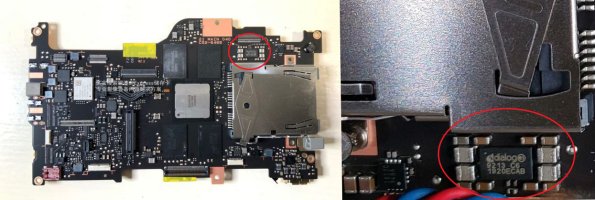How expensive is the LI-9000 (let's ignore the costs to implement it into a body)? And how big would the tile need to be at 5mm thickness?
Then you would need to factor in multiple copper pipes (CFE, Digic, Memory, Not sure whether you can for the sensor given IBIS), so at least 3 copper pipes)?
Plus the CFE generates a lot of heat from what others are saying as I don't think it has any other choice but to heat up it's metal casing.
And out of curiousity, if the Silica tile is exposed to the outside, does it dissipate any quicker? If Canon used it in the bottom of the body, would that help dissipate quicker? If I understood you correctly, it wouldn't be hot to the touch, but would increase the bottom of the case by 5mm? Is the tile sturdy in all other respects?
Finally, your solution is perhaps a little high end. The R5 is not intended to be a 8k video workhorse, I think many would be happy to shoot stills, shoot HQ video, shoot stills and the only limit is the max record times. I'd be fine with that. Is there anything you know which may not be as costly as the ceramic tiles?
===
Okie Dokie! I did some further asking of our mechanical and materials engineers.
The LI-900 silica heat sink manufacturing costs in Canadian dollars at our own facility requires $75,000 for cryogenically-hardened Tool Steel machined mold that has a 10 by 10 part matrix (i.e. 100 heat sinks in one mold) which takes about 48 hours to CNC-machine properly to 1/10,000th of an inch tolerances (2.5 microns) and then we cryogenically surface harden the tool steel mold by dipping the mold into liquid helium for a specified period of time.
The ceramic matrix interior composite which is a very poor conductor of heat BUT is able to ABSORB a very high number of Joules per hour per cubic millimetre costs us $30 CAN ($23 US) per stamped/baked part. The thin outer heat shield layer is silicon/boron composite which prevents heat from radiating from the interior is another $10 to bake it on at a 1.5mm or 2mm thick layer.
Then you need to run solid copper heat transfer pipes from the parts being cooled (i.e. the CPU, RAM, memory cards, battery, etc) into the middle of the ceramic matrix composite thermal absorbent compound and ANOTHER separate set of heat pipes (i.e. with a gap in between the other set of heat input pipes) that runs from the interior out to a 2 cm square copper plate (or other thermal transfer metal plate material) that is at the bottom of the camera so it dissipates the ABSORBED heat over a long period of time to the outer camera surface.
For strength reasons (i.e. the LI-900 tile is quite weak structurally), we encase the entire tile in high strength heat resistant HDPE (High Density Polyethylene) plastic which melts at about 270 Celcius. Since the magnesium body of the Canon R5 camera has a DIFFERENT thermal expansion coefficient than the ceramic heat sink, you also have to "float" the entire heat sink within the R5 body usually via attaching it to the internal body via flexible silicone rubber gaskets.
AND....after a bit more in-depth of a look-see at the R5 camera tear down, the copper heat transfer pipes MUST be a minimum of 3mm diameter going from the copper plates attached to the CPU's and other hot parts AND that means there MUST be at least 3 mm thick surrounding encasement of heat-keeping ceramic matrix composite on all sizes. The key point is that the ceramic tile and copper heat pipe creates a large thermal differential between the CPU's (and other hot parts!) which gets ABSORBED into the interior ceramic matrix composite of the heat sink tile which continuously absorbs heats but POORLY radiates it.
That heat slowly and eventually finds itself moving over and transferring to the second set of embedded ceramic-gapped output copper heat transfer pipes which then moves the heat out to the 2 cm square metal heat output block on the bottom of the camera.
The thermal mass of the interior ceramic is such that almost 5 million joules of heat (about 60 watts) can be kept within and NOT pass through the outer 2mm thick heat shield layer for up to 24 hours! By covering BOTH sets of copper input and output heat transfer pipe with a thin layer of heat shield ceramic (i.e. a one-mm thick layer of silicon/boron), the heat STAYS in the pipes as it transfers from the hot CPU into the ceramic interior of the heat sink for a long period of time ranging from 12 to 24 hours.
That absorbed heat eventually saturates the heat sink and that thermal energy MUST SLOWLY migrate over to the second set of embedded heat pipes which then moves the heat outwards to the bottom-of-camera radiative thermal plate while the camera is working AND when it is shut off.
Along with the outer heat shield layer, it means a 10 cm by 6 cm by 15 mm thick (total weight is around 200 grams worth of ceramic and copper pipe) of LI-900 tile could easily ABSORB the 160,000 Joules per hour the Canon DIGIC CPU's and other hot parts tend to give off as heat. AND ... it could absorb it for about 12 hours to 24 hours for my estimate at FULL DCI 8k 30 fps and DCI 4K 120 fps continuous recording before the camera would start to get really warm to the touch.
The Total Cost for LI-900 tile-like material plus copper plates and embedded copper heat transfer pipes and ceramic heat shield outer layer plus HDPE casing is $120 Canadian per part or about $90 US at a run of 5000 heat sink parts. The cryo-hardened molds tend to lasts for about 20,000+ stampings so that's two million camera heat sinks. Not too bad at all for a mere $75,000 worth of tool steel and CNC machining/cryo-hardening!
If Canon does a run of 100,000 heat sink parts per order, that cost drops STEEPLY to about $60 US per heat sink tile and copper piping because you can buy copper and ceramic matrix powder at a discount at those volumes!!!
SO YES! Canon could EASILY do this! They don't even need to use expensive silica ceramic composite matrix as the heat absorbent material for the tile. Just use the SAME ceramic material used in electrical resistors that you buy for 25 cents! With some Canon Research and Development scientists and elbow grease, they could bring down the cost of adding a SUPERB 12 to 24 hour endurance super heat sink into an R5 or R1 camera down to less than $25 US!
I would be more than HAPPY to pay an extra $25 to get a slightly thicker Canon R5 and R1dx with such 12 to 24 hour DCI 8K / 120 fps 4k video recording heat wicking capability AND its weather sealing kept intact!
GO DO IT CANON !!!
You've GOT the technology AND the scientists!
YES YOU CAN DO IT CANON !!!
V
P.S. I just realized you also NEED encase the INTERIOR of the battery compartment AND the insides of the memory card slots with uncoated copper or aluminum thermal transfer plate so as to wick lots of heat away from the heated-up battery and memory card via direct contact heat transfer into the heat sink tile using copper heat transfer pipes that are round or flat ribbon in form AND have been coated with silicon/boron heat shield layering. Canon can do some thermal transfer modelling in CATIA CAD/CAM/FEA software (or whatever they use for 3D CAD!) to ensure that the heat transfers into the heat sink quickly, stays there and transfers only slowly out to the bottom of the camera.
V





